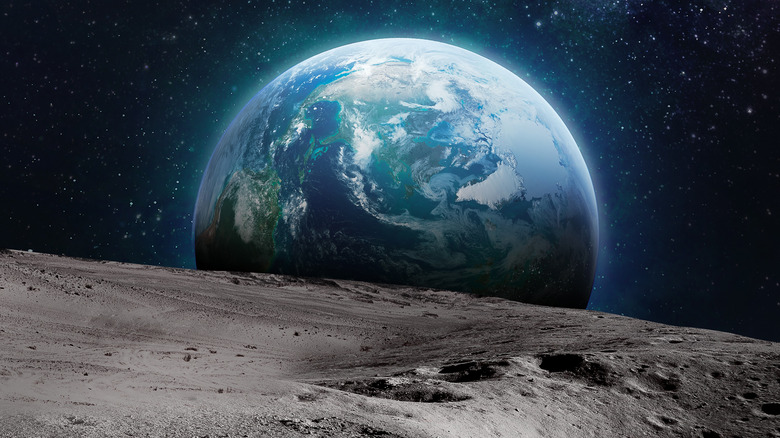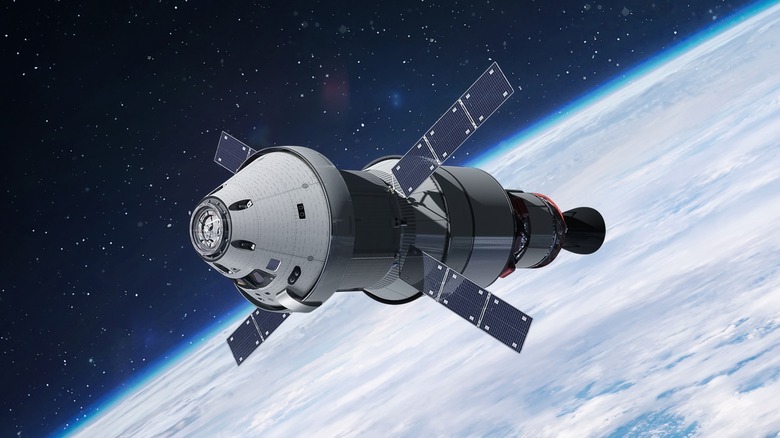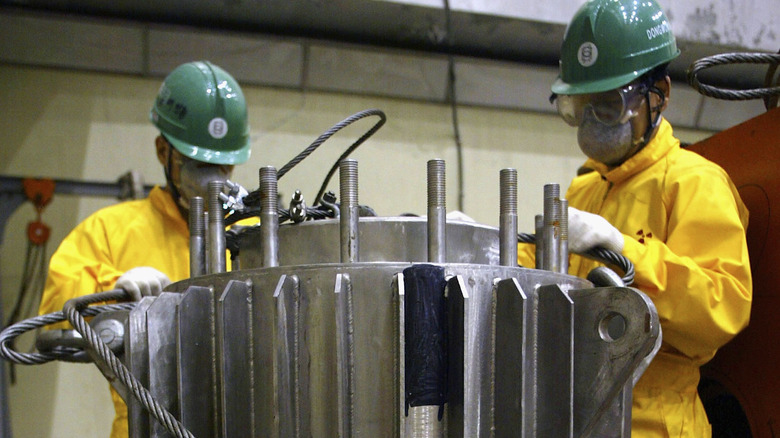NASA Reveals Three Design Concepts For Nuclear Power On The Moon
There have been many visions of the future, and many of those visions share common themes. Back around the time man first landed on the moon in 1969, people expected the next century to feature flying cars, pills replacing food, and the colonization of space. While most vehicles are still firmly reliant on roads, and your average person prefers an actual meal to a small tablet, we are making progress on the space colonization front.
Several leading figures, including SpaceX owner Elon Musk, have talked about sending humans to Mars and humanity becoming a multi-planet species. However, the general consensus suggests we can't make it to Mars without first establishing a presence on Earth's largest natural satellite first, and that would require getting humans to the moon for the first time since 1972. Jim Reuter, associate administrator for NASA's Space Technology Mission Directorate believes the steps NASA is taking will eventually lead to humans living on other planets. Reuter says that the technology being developed could "drive our exploration of the moon, Mars, and beyond," as well as "help us lay the groundwork for powering our long-term human presence on other worlds."
NASA isn't planning on getting back to the moon alone. It will be working alongside other national space agencies and inviting private companies to get involved in various parts of the project. A recent example of the space agency's collaboration with private entities is in the design of the new lunar lander. Last year, five companies were picked to work on the project, receiving a combined total of $146 million for their contributions. Now NASA has chosen a further five companies to help design a way to power both deep space missions and its proposed moon base.
NASA's Artemis project will take space exploration to the next level
NASA's Artemis Project has some big plans: it's going to land the first woman and first person of color on the moon by 2024. The Artemis crew would also be the first humans to set foot on the moon in over 52 years. The project is also going to "explore more of the lunar surface than ever before," according to the space agency. Those plans, however grand, are just the tip of the iceberg. One of the main goals of Artemis involves building a permanent base on the moon. That base, along with a so-called gateway in lunar orbit, will allow robots, astronauts, and scientists to "explore more and conduct more science than ever before," NASA explains.
The eventual goal is to use what NASA — and the agencies it is working with — learn on the moon to propel humanity to Mars. There is even talk of deep-space exploration for the benefit of humankind. However, permanent bases need power and NASA has decided nuclear fission is the best way to provide that energy. The fact it will be based in space and on the moon does present unique challenges. Weight is a major concern when blasting anything into space, the moon itself may be difficult to resupply, and power may be needed in areas where things like sunlight can't be relied on. To help meet these challenges, companies were invited to pitch ideas to the space agency. Now three companies have been told they can move forward with their designs.
What are the concepts and who is building them?
NASA says it has handed out three 12-month, $5 million dollar contracts to Lockheed Martin, Westinghouse, and IX. These companies aren't working alone: Lockheed Martin is partnering with BWXT and Creare for its project, Westinghouse is working with Aerojet Rocketdyne, and IX (which is already a joint venture of Intuitive Machines and X-Energy) will work with Maxar and Boeing.
The exact designs for each company's power system haven't been revealed, but some details are currently known. The proposals should be ready to blast off within a decade and demonstrate their capabilities on the moon itself. The systems must be "relatively lightweight," "robust," and capable of at "least 40 kilowatts of power," which NASA says is enough to supply 30 houses with power for 10 years. Because of their nuclear nature, the concepts are capable of delivering power 24 hours a day, seven days a week, regardless of conditions. This means NASA will be able to power bases and missions regardless of access to natural power sources like sunlight,
NASA says the main goal of phase one is to gather the information that can lead to "a full flight-certified fission power system." The project could also take us a lot farther than the moon or even Mars. The space agency says that fission surface power technologies may help it further develop the nuclear propulsion systems its ships use. NASA hopes nuclear propulsion can eventually help them complete deep space exploration missions.


